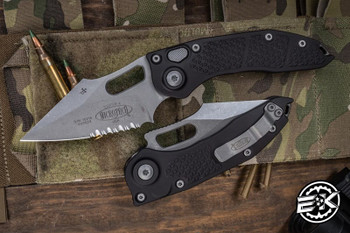9 Things You Can’t Ignore When Buying Your First EDC
Posted by EKnives on Jan 9th 2024
You know you’re getting serious about purchasing your first EDC (everyday carry) knife when your internet searches include lots of versions of “EDC knife sale,” “where to buy pocket knives,” and “where to buy switchblades.”
But how do you go from being a knife novice to buying your first one? With all the specs listed on the various sites you’re perusing, surely there’s more to buying a blade than looks alone. How do you know what to look for? What should you avoid?
Below are nine things you can’t ignore when buying your first EDC knife. This should help you have enough confidence to make sure you’re picking the right knife for yourself.
1. Know The Laws
Like most things, knife regulations are not federal. They are state-issued. A knife that is legal in one state isn’t necessarily legal the next one over. Before making your first EDC knife purchase, you must understand which knives are legal where you live. The law will hold you responsible for buying a blade that isn’t legal where you live.
Do you travel a lot? Is it mainly to a few locations out of state? Be sure to check the laws for those states to see if you’d be breaking any by bringing your new knife. You either need to remember to leave your knife at home or buy one that’s legal in all the states you visit regularly.
2. Knife Specs
Because of those legality issues, you will want to be familiar with the knife and blade length of any EDC knife you are considering. As you look at some knives and maybe even handle a few, you can get an idea of what feels like a natural and comfortable length for you. Since this is your first knife, you don’t need to stress too much about other specs right now unless you want to. But the more extensive your collection grows, the more your list of preferences probably will, too. Learning the weight of a knife down to the tenth of an ounce can become a fun way to compare and contrast your different blades.
3. Pick The Knife For The Job
If you are buying your first knife, you might not realize that there are different types of knives designed to perform different tasks. Figure out what you plan to use your knife for and buy one accordingly. A bushcraft knife isn’t going to do you much good if you need a tool to help you cut an animal after hunting.
4. Quality
When it comes to knives, you get what you pay for. The quality and durability of knives can vary greatly, and it isn’t always easy to tell just from looking at them. Sticking with well-known and trusted brands will help you know you are making a quality purchase.
5. Ease Of Use
If you are not only new to buying knives but also new to handling them, you will want to start off easy. Some locking mechanisms or automatic blades can become dangerous if you don’t know how to deal with them. You can work your way up to any knife you want, but for your first knife, it’s probably best to keep it simple.
6. Price
Determine how much you can afford to spend on a knife before you start shopping. If you don’t find anything you like in your price range, you can take a step back and work on saving more money before making the jump. Remind yourself of point four if you want to rush into something you can afford right now.
7. Aesthetics
If your knife will be with you every day, you might as well love it. Aesthetics can be very personal, so find out what attracts you. Determine what colors, designs, and customizations you like. While aesthetics are important, remember that having a functioning EDC knife is more important than one that just looks cool. Save the aesthetic-only purchases for your subsequent collection.
8. Respect
Once you make your first EDC purchase, you will undoubtedly be excited about it. That doesn’t excuse pulling your knife out when you should keep it sheathed. Have respect for the blade. It can be a dangerous tool.
9. Learn Knife Maintenance
Before purchasing your first knife, you might not realize that you must put in a little elbow grease to keep your knife functional. Understand how to sharpen your knife. Find out if the knife you are interested in requires oiling. Research the best way to store your knife. Knowing this beforehand will make your transition into knife ownership more seamless.
Based on these nine things you can’t ignore, you should be able to whittle down everything in your cart to the perfect knife to start your collection.
The best part? Even if the knife is not perfect, you can learn what you like and dislike from it and try again on your next one.

